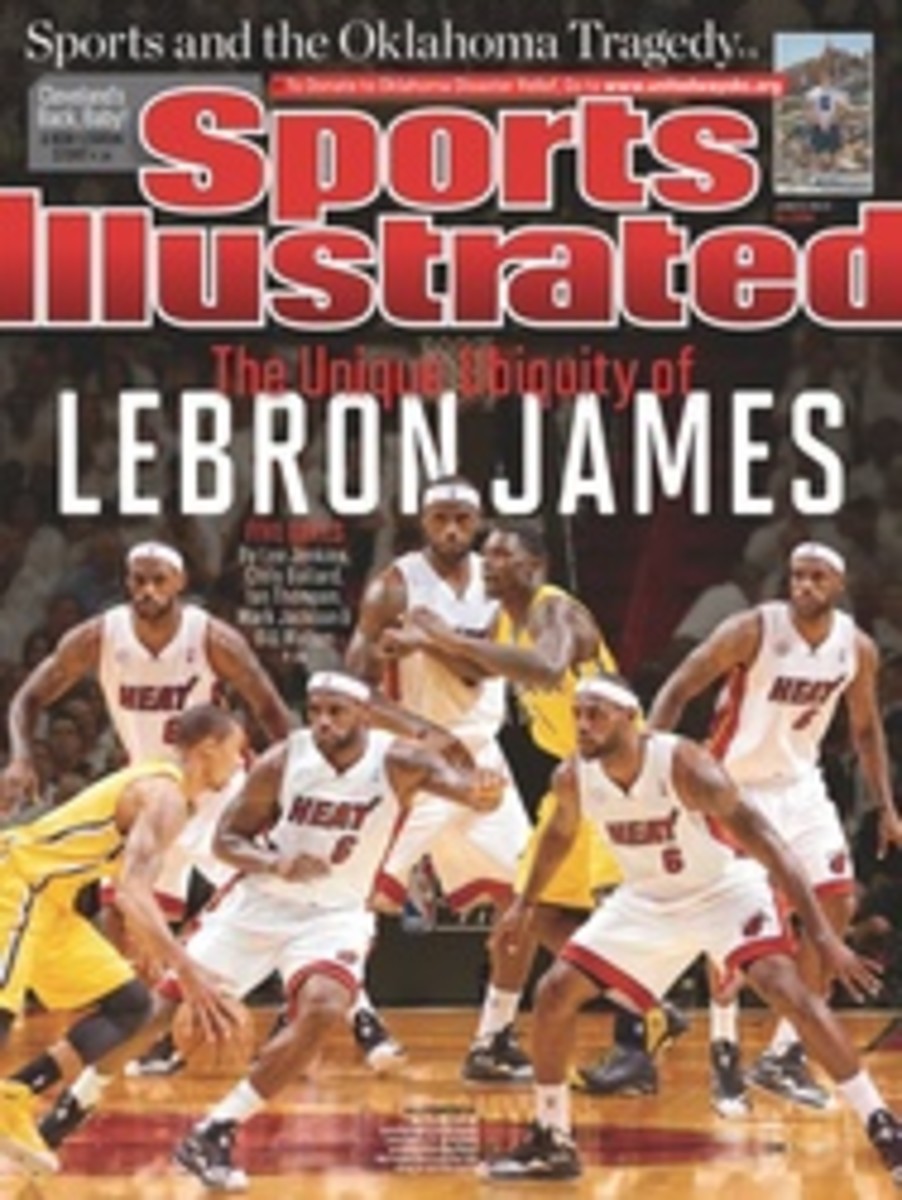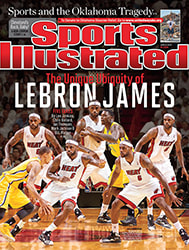
Last of The Middle Linebackers
Maybe it's because the Bears haven't made any major changes to their uniform in decades, never jazzed up their logo or updated their jerseys with a splash of teal. Brian Urlacher always had a retro look to him, as if he had been plucked from the 1960s and Photoshopped in as a modern-day middle linebacker. It wasn't that his playing style was old-fashioned—he helped revolutionize the position with his speed—but it was easy to imagine watching him flatten a running back in grainy black-and-white, with the whirring sound of a film projector in the background.
Visuals aside, it was Urlacher's job title and his central role in the Chicago defense that really made him a throwback. There was a time when middle linebacker wasn't just a position but a mantle—like heavyweight champion, it's a term that doesn't carry quite the prestige it used to. Go back to the beginning of NFL history, from Chuck Bednarik to Sam Huff, Ray Nitschke and Dick Butkus, from Jack Lambert to Mike Singletary to Junior Seau. The middle linebacker always seemed like the toughest man on a field full of them, the guy in the center of it all on every play, staring menacingly enough at the quarterback to make him regret his career choice and preparing to blow up whatever plans the offense had.
Though he was mostly a safety at New Mexico, Urlacher quickly fit into that classic, intimidating middle linebacker mold when he reached the NFL in 2000. Even his name sounded like a grunt forced out of a ballcarrier he'd knocked breathless: UR-lacker. But now, in these days of 3--4 defenses and edge rushers and extra defensive backs and third-down substitutions, the idea of the middle linebacker as the one-man spine of the defense feels increasingly out of step with the times. That's why when the 35-year-old announced his retirement last week after 13 seasons with the Bears—and only the Bears—it felt like the end of more than just a memorable career. With his departure, coupled with Ray Lewis's retirement from the Ravens after the Super Bowl, the position just isn't what it used to be.
"It's a new day," says Singletary, Urlacher's predecessor as Chicago's man in the middle. "Offenses are spreading everything out with four and five wide receivers, and defenses have to adjust. If you even have a middle linebacker on the field, it's hard for him to have the kind of all-around, every-play impact that the position used to have. Times change."
Urlacher was part of that change. At 6'4" and 258 pounds he could fill a hole and stop the run, but he was the rare middle linebacker who was just as effective away from the line of scrimmage, running step-for-step with would-be pass catchers. The blue-collar, Da Bears stereotype wasn't a perfect fit either, not when he was out on the town with tabloid regular Paris Hilton or TV personality Jenny McCarthy.
Yet Urlacher was always more sturdy antique than fancy new gadget. He certainly looked old school, even in civilian clothes, with his shaved head, a neck thicker than the columns at Soldier Field and a stone-serious expression that indicated he might make you his next tackle. By assuming the middle-man title after Singletary, who had followed Butkus, who had taken over for the man widely credited with creating the position in the 1950s, Bill George, Urlacher was a member of the fraternity's most exclusive chapter. Together, the foursome is like an Evolution of Man poster, subspecies middle linebacker. George went from a middle guard in a four-point stance to a stand-up position a few steps behind the line of scrimmage. Butkus followed and brought a bone-crushing brutality to the position. Singletary added a bug-eyed intensity before Urlacher introduced his speed and athleticism.
Maybe the best part of it all is the reverence each seems to have for the other members of the group. During his rookie year Singletary took videotape of Butkus home with him and marveled at his ability to intimidate opponents. Urlacher studied footage of both men, and it wasn't until then that he fully appreciated the brutality of Butkus's hits and Singletary's fervor and intelligence.
His speed stolen from him by injuries, Urlacher's last old-school move was to retire as a Bear. Though he gauged the interest of other teams after he and Chicago couldn't agree on a contract in March, in the end he decided that he "just didn't want to wear another team's jersey." But some future Bear will one day wear his, or at least his number 54. In a coincidence of timing the Bears announced last week that former tight end Mike Ditka's 89 is the 14th and last number they intend to retire.
So Urlacher will leave his number behind, but an era goes with him. Remember him when he was healthy and stood low in the middle, the scariest man on the field, the way middle linebackers used to do. Remember that even when Brian Urlacher was young, he was the best kind of old.
Follow @SI_PhilTaylor
Where does middle linebacker rank among the most iconic positions in sports?
Tell us on Twitter by using #SIPointAfter and following @SI_PhilTaylor
PHOTO
JOHN BURGESS FOR SPORTS ILLUSTRATED (TAYLOR)
PHOTO
AL TIELEMANS/SPORTS ILLUSTRATED (URLACHER)

